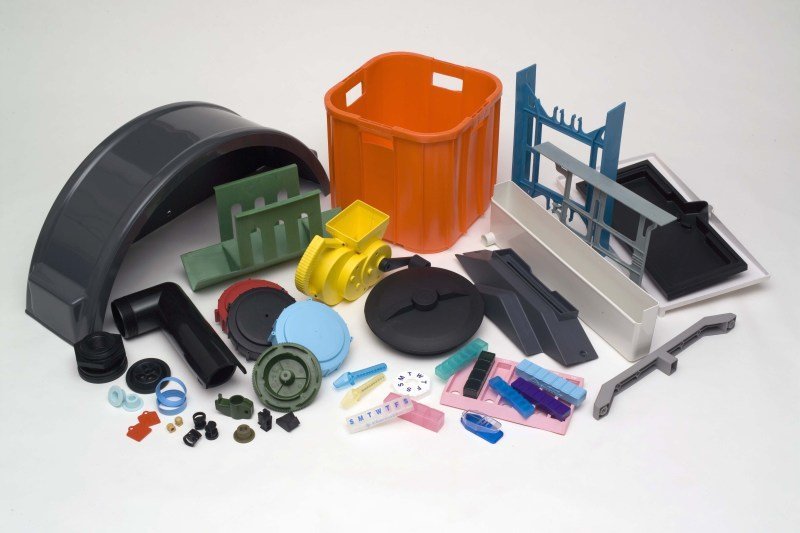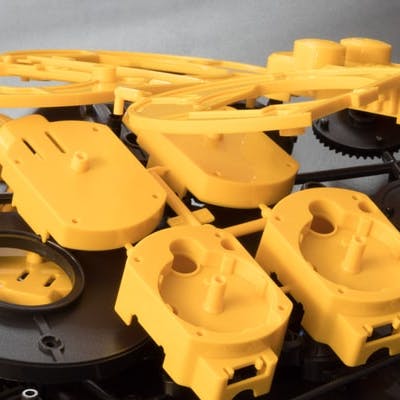Just How Plastic Injection Molding Drives Performance in Automation
Just How Plastic Injection Molding Drives Performance in Automation
Blog Article
Recognizing the Basics of Plastic Shot Molding Processes
Plastic shot molding serves as a cornerstone of modern production, offering a methodical strategy to creating complicated parts with accuracy. Discovering these essential components could expose just how even small changes can lead to significant improvements in manufacturing outcomes, elevating questions about the capacity for innovation in this recognized process.
What Is Plastic Injection Molding?
Plastic injection molding is an extensively made use of manufacturing process that transforms thermoplastic and thermosetting products into specific and intricate forms. This strategy is preferred for its ability to create high volumes of similar parts with remarkable precision, making it an important approach in various industries, consisting of automobile, durable goods, and clinical devices.
The process involves thawing the picked plastic product and infusing it right into a mold under high stress. The mold, designed to the specifications of the desired component, enables the molten plastic to take form as it cools and solidifies. When the material has hardened, the mold is opened, and the ended up part is ejected.
Plastic injection molding supplies a number of advantages, including lowered waste, consistency in production, and the capability to incorporate complex layouts that may be testing with other producing approaches. In addition, it sustains a wide variety of materials, each offering one-of-a-kind homes that can be tailored for details applications. As sectors remain to innovate, plastic shot molding remains at the center, enabling the growth of advanced products that satisfy evolving customer needs.
The Injection Molding Process
The shot molding process is a sophisticated strategy that involves several essential phases to generate high-grade plastic components. Plastic pellets are fed right into a heated barrel where they are thawed into a thick fluid. This molten plastic is then injected under high stress right into a precision-engineered mold and mildew, which shapes the material right into the wanted kind.
Once the mold and mildew is filled, the plastic is permitted to strengthen and cool, taking the form of the mold tooth cavity. Air conditioning time is critical, as it impacts the cycle time and the final homes of the molded part. After sufficient cooling, the mold and mildew opens, and the completed part is expelled utilizing ejector pins.

Products Used in Injection Molding
Numerous products can be used in the injection molding procedure, each offering special homes that deal with particular applications. The most typically used materials include thermoplastics, thermosetting plastics, and elastomers.

Thermosetting plastics, like epoxy and phenolic materials, go through a chemical adjustment during the curing procedure, leading to an inflexible, inflexible framework. These materials are suitable for applications calling for high heat resistance and architectural integrity, commonly utilized in electric insulators and vehicle components.
Elastomers, including silicone and rubber-based products, supply adaptability and strength. Their distinct homes make them suitable for applications that demand elasticity, such as seals and gaskets.
Furthermore, specialized products like bio-based plastics and composites are getting traction for their environmental benefits and boosted performance characteristics, widening the scope of shot molding applications in numerous markets. Recognizing the properties of these materials is essential for choosing the proper kind for particular jobs.
Benefits of Injection Molding
Shot molding stands out as a highly reliable manufacturing procedure that uses various advantages for generating complex components with accuracy. Among the most significant advantages is the capacity to develop complex styles that would certainly be tough or difficult to accomplish with various other approaches (Plastic Injection Molding). The process permits limited resistances and comprehensive attributes, making sure premium parts
Additionally, shot molding is understood for its quick production capacities, making it an ideal option for high-volume production. When the mold is developed, components can be created see swiftly, minimizing preparations and boosting total performance. This performance not just decreases production costs but likewise provides an one-upmanship out there.
The convenience of products used in shot molding further enhances its appeal. A variety of thermoplastics and thermosetting polymers can be employed, allowing suppliers to select products that finest satisfy their certain needs, including warmth, adaptability, and stamina resistance.
Additionally, the process lessens waste, as excess product can commonly be reused and recycled. This sustainability aspect adds to a lowered ecological influence, making shot molding a responsible manufacturing choice. On the whole, the advantages of injection molding make it a recommended technique for several industries.
Elements Influencing Item High Quality
While numerous factors can influence item top quality in shot molding, recognizing these components is crucial for achieving ideal results. Trick aspects include product option, processing parameters, and mold and mildew layout.
Product option plays a vital function, as various polymers display unique properties that affect flowability, stamina, and thermal Full Report stability. Inadequate product option can cause flaws such as warping or insufficient filling.
Processing criteria, including stress, temperature, and cycle time, need to be thoroughly regulated. Variations in these setups can lead to inconsistencies partly dimensions and surface coating. Exceedingly high pop over to this web-site temperatures may trigger destruction of the polymer, while insufficient stress can result in short shots.
Mold design is just as essential, as it determines the flow of the molten plastic and the cooling procedure. Poorly made molds may cause unequal air conditioning rates, leading to recurring stress and anxieties and dimensional inaccuracies.

Final Thought
In verdict, plastic shot molding acts as an essential manufacturing procedure that allows the reliable manufacturing of premium elements. Mastery of the injection molding procedure, consisting of the understanding of materials and the influence of numerous elements on product top quality, is important for accomplishing optimal results. The advantages of this technique, such as cost-effectiveness and layout adaptability, additional underscore its value across several sectors, strengthening its standing as a preferred selection for high-volume manufacturing.
Plastic injection molding offers as a foundation of modern manufacturing, providing a systematic technique to producing intricate parts with accuracy.Plastic shot molding supplies several advantages, consisting of lowered waste, uniformity in production, and the capacity to integrate complex designs that may be testing with various other making methods (Plastic Injection Molding). As sectors continue to introduce, plastic injection molding remains at the leading edge, allowing the development of advanced products that satisfy progressing consumer demands
The shot molding process is an innovative method that involves several crucial stages to create top notch plastic parts.In final thought, plastic injection molding offers as an important production procedure that allows the efficient manufacturing of high-grade elements.
Report this page